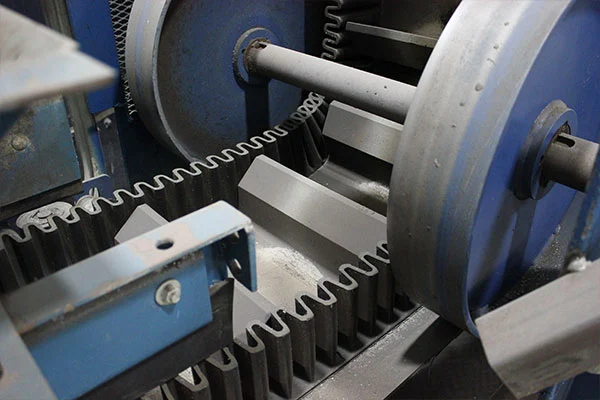
Navigating the world of conveyor systems becomes seamless with a thorough understanding of horizontal, vertical, and inclined options. You will discover unique aspects of each type to identify the most effective one for your tasks.
Whether you prefer an incline belt conveyor or bucket elevator, this guide explains how these machines work and their components. It meticulously examines operation steps, advantages like reliable performance or gentle handling, and differences between types tailored for food conveyance needs.
Exploring Horizontal Conveyor Applications
Horizontal conveyor systems are essential for material handling, moving items quickly along a flat surface. You’ll often find these at work across diverse industries where speed and efficiency are critical. Think of warehouses and distribution centers; they use them to transport boxes or packaging goods with ease.
Now take incline belt conveyors: similar to their horizontal siblings, they shine literally when there’s an uphill task! When your space can’t spread outwards but upwards is open game? An incline system leverages that vertical real estate.
It carries products from one level up to another—a smooth glide on its ascending path. The care of raw or sticky foods during transit demands specialized equipment like the sanitary design of some conveyors, which makes clean-ups less tricky and keeps bacteria away. Incline belt systems also offer customization perks that adapt effortlessly as needs evolve – think of new product lines or operational shifts within the facility requiring flexible machinery setups!
Inclined solutions could be your go-to choice versus bulkier alternatives if you are concerned about fitting this neatly into tighter spaces alongside existing equipment.
Benefits of Vertical Conveyance Solutions
Vertical conveyance solutions pack a punch for your business. They’re cost-effective; running them costs the same as horizontal systems, yet their output is far higher. Their flexibility is unmatched: carrying different items simultaneously reduces manpower on changeovers and fits various industries due to metal belts’ resistance to heat and chemicals.
Cleanliness is another big plus—important in medical and food sectors where hygiene rules are tough. These conveyors clean easily and don’t stick to bacteria, ensuring products stay safe without lubricants that could contaminate them. You can customize these systems, too!
Coat surfaces or add custom parts for perfect product handling in your unique setup.
Maximizing Efficiency with Inclined Systems
Do you need a system that moves your goods up with ease? They use motor-driven belts designed for the job—thick or thin items, fast or slow speeds. The motors adjust to the belt’s load and slope angle without pause.
This means things go where they should, smoothly and without break time. What kind of stuff do you move? Well, incline systems work with various materials — cubes of cheese to boxes in bulk! Dynamic Conveyor leads here; their gear is top-notch yet easy on upkeep. Think about safety, too. Conveying upwards cuts heavy lifting risks for workers—that saves cost and cares for health both at once!
You now grasp the essentials of conveyor systems, whether horizontal for stable transport, vertical for height challenges, or inclined to conquer space limitations. Technopack’s motorized take-away incline conveyors exemplify this technology at work—efficiently moving your goods with care and precision. Your choice hinges on specific needs:
- Go horizontal for simplicity.
- Choose vertical to save floor space.
- Opt for an incline when you need both elevation and efficient use of your facility’s layout.
Select wisely to boost productivity in material handling within any operation. You can view a selection of our products here.



